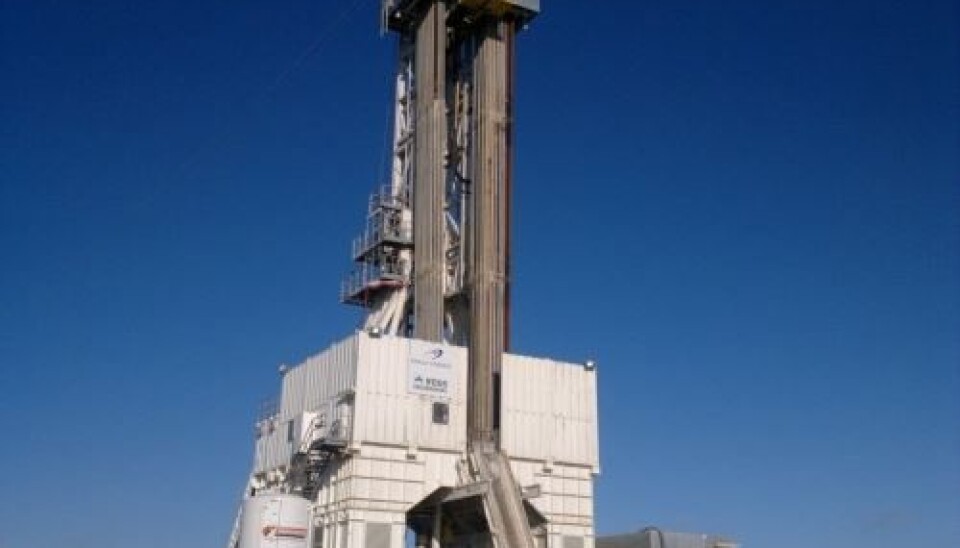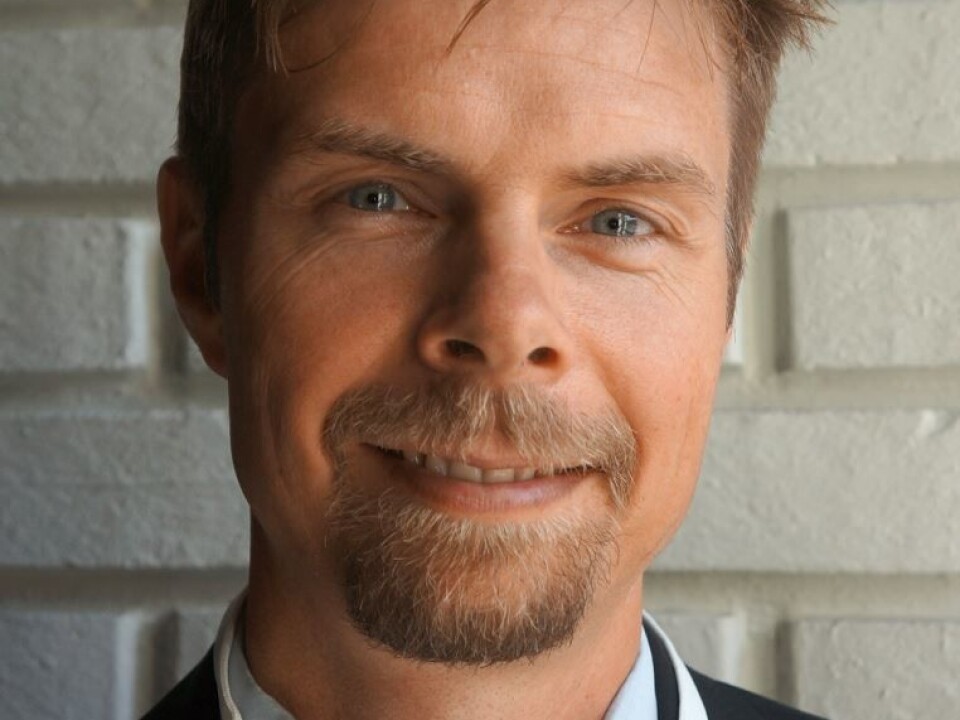
Danes drill deep for geothermal energy
Political determination and natural advantages combine to heat up Denmark's investment in geothermal resources.
It’s hot and wet down in the depths. This, put simply, is why Danes have set drill heads rotating deep into the sand and sandstone below them for energy.
Søren Berg Lorenzen of Danish Geothermal District Heating was a speaker at the recent GeoEnergi 2013 conference in Bergen.
He talked about some of the projects that make Denmark the Scandinavian leader in geothermal energy. One reason for their dominance is the country has made a political decision to rely on this clean resource.
Although Denmark does not have volcanic activity or hot springs, it does have certain geological advantages.
Clay duvet
Denmark is almost entirely covered by layers of sediments and sedimentary rock, particularly sandstone and shale (clay slate).

In some parts of the country, the shale stretches out like an enormous duvet or quilt blanket across the land, insulating the heat that builds up in the depths.
This heat in the crust comes from the original molten centre of the Earth, dating from its formation, and from natural radioactive decay of minerals in rock.
We don’t need to drill very deep to get a heat exchanger working, or into shales to retrieve heat. But these shales are hard and dense. The Danes have to go deeper to find the substance that can carry heat up to us – water.
Water carries heat
Ground water circulates fairly freely in the permeable sandstone that much of Denmark rests upon. This water holds heat well. In other words, water can store heat and is a good heat carrier.
In many spots water can be readily pumped up from porous rock. Compared to its hard-rock neighbours Sweden and Norway, Denmark is naturally set for exploiting geothermal heat.
Deep below Thisted
Despite such natural advantages, the drilling of viable, long-term holes through rock isn’t easy. The Danes have to drill really deep to tap into heat and hot salty water.
Berg Lorenzen discussed three projects. The first one was drilled in 1984 at Thisted on Jutland.
Thisted is in northwest Denmark, sandwiched between ocean beaches on the west and the large Limfjord to the east.
Warm pumped up, cold piped down
The Danes have drilled deeply into the sandstone at Thisted. Some 1,250 metres below the gentle Jutland landscape the ground water is about 45° C, or slightly warmer than the temperature of a nice hot shower.
This water is piped up to the surface and passes through a heat exchanger, which extracts energy. The heat exchanger cools the water down to 17° C, about the same as the local seawater on an average summer day, and then pumps the water back down to be reheated.
Scalding down below
The next power plant wasn’t built until 2005, on Amager, an island which is mainly occupied by the Copenhagen International Airport.
Here the Danes drilled twice as far down though the strata. At a depth of 2.6 kilometres, the water is a scalding 73° C.
This plant is really only a little research facility, but Berg Lorenzen says several plants are on the drawing boards.
Shale quilt in the south
The latest facilities were opened in February this year. The brand new plant is in Sønderborg, near the German border.
The Sønderborg plant is much like the one in Thisted, with a vital difference: Here the earth has an insulating layer of shale above the porous sandstone.
Political determination
Denmark has a valuable natural resource and the political will to use it for remote or district heating.
The link between district heating and deep geothermal energy is rooted in Danish law. Surface land may be private but the country's subsurface is owned by the State.
All subsurface activities are subject to licensing. Knowledge and data retrieved from the depths must be given to the Geological Survey of Denmark and Greenland, which releases the information for public benefit.
Local district heating plants
The Danish remote heating system is thus governed by legislation, which ensures central planning and strong consumer protection. Companies in the Danish District Heating Association are not in the game to make big profits from keeping Danish living rooms comfy.
A generous public financing and guarantee enterprise, KommuneKredit, has dished out oodles of money to municipal and local district heating companies, which supply energy to both large and small buildings.
As a result, a whopping six out of ten Danish households are connected and enjoy the benefits of district heating systems.
Completely renewable by 2050
Danish authorities have used this foundation to commit to a cap on emissions. By the target year 2050, Danish energy needs, including its transport sector, should be relying 100 percent on renewable sources.
In 2012, a nearly unanimous national assembly, the Folketing, voted for this target in an ambitious Danish Energy Agreement.
In this connection a mere fraction of the costs, only about $6 million, is being allocated by the government toward developing environmental geothermal technology for district heating.
But more than half the energy from remote heating facilities already stems from renewable sources. Lorenzen describes Thisted as a good example, because the share of renewable energy is 80 percent.
From bio to geo
The geothermal plant here stands next to one that burns household rubbish and waste. However, the current primary source of renewable energy at the remote heating plant facilities is bio-fuel.
But bio-fuels will be in short supply in the future, Lorenzen says. This is why he thinks geothermal energy is so essential.
Swedish laissez faire
Denmark’s cosy relationship between remote heating and geothermal plants relies on national political priorities. The situation in Sweden is different, Signhild Gehlin, from Swedish Geoenergicentrum, explained at the conference.
Sweden has been more prone to let economic forces run freely in the domestic energy market. So geothermal and waste-burning remote heating plants compete instead of cooperate.
Norway in its geothermal infancy
And Norway? The country is blessed with mountains and plenty of precipitation, so hydroelectric power dominates. But in 2011 a test drilling project in Fyllingsdalen, a Bergen suburb, ground to a halt after just descending 500 metres, when it ran into unexpected loose deposits.
The national power concern Statkraft drilled 800 metres down in the city of Moss in a test project last winter. The intention was to do as the Danes had – combine deep geothermal energy with an existing remote heating plant.
But these feeble starts fall far short of developing a robust Norwegian deep geothermal power system. At the conference, Torbjørn Mehli of Statkraft described the present technology as immature.
Nor does he think Norway has the best prerequisites for making the technology economically viable.
Drilling technology
But Norway isn’t a complete slacker in the field. The Danish deep drilling projects have engaged the help of Norwegian firms with experience in the offshore oil and gas industry
This is because Norway’s continental shelf has its share of sedimentary layers, similar to those found underground in Denmark.
--------------------------------------
Read the Norwegian version of this article at forskning.no
Translated by: Glenn Ostling






